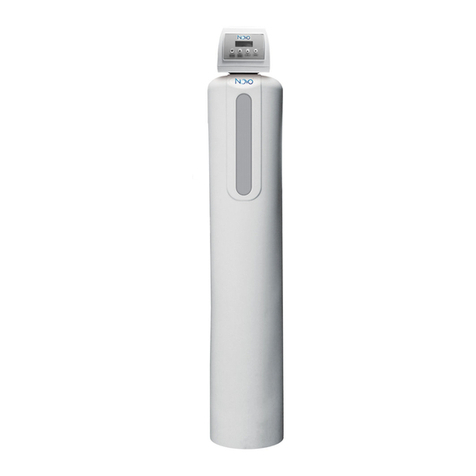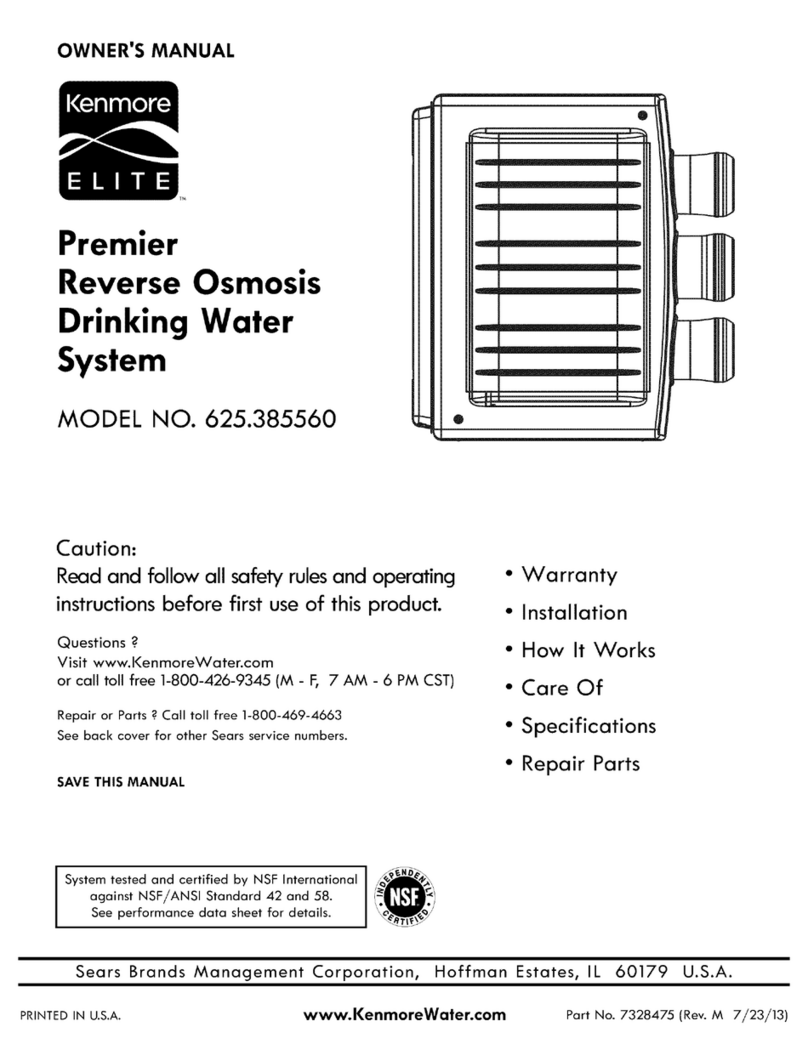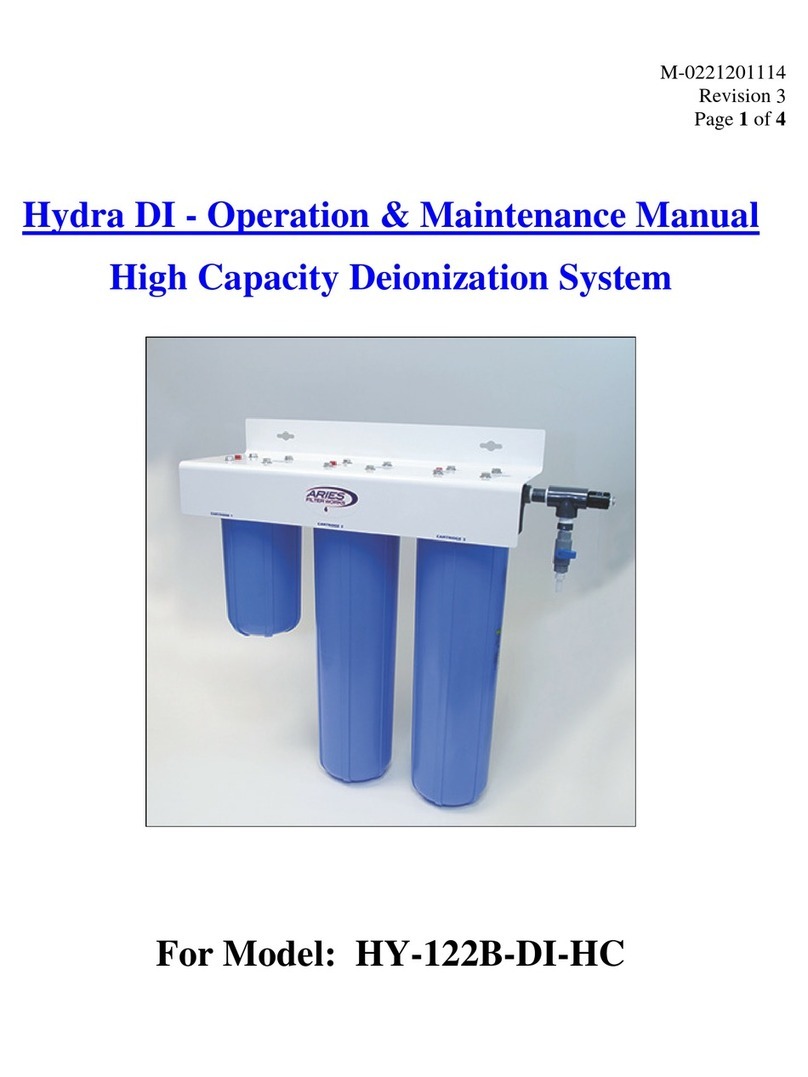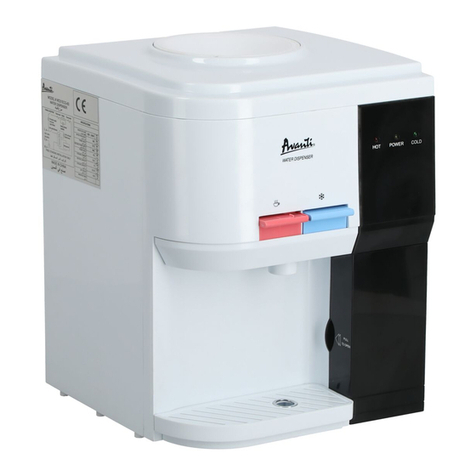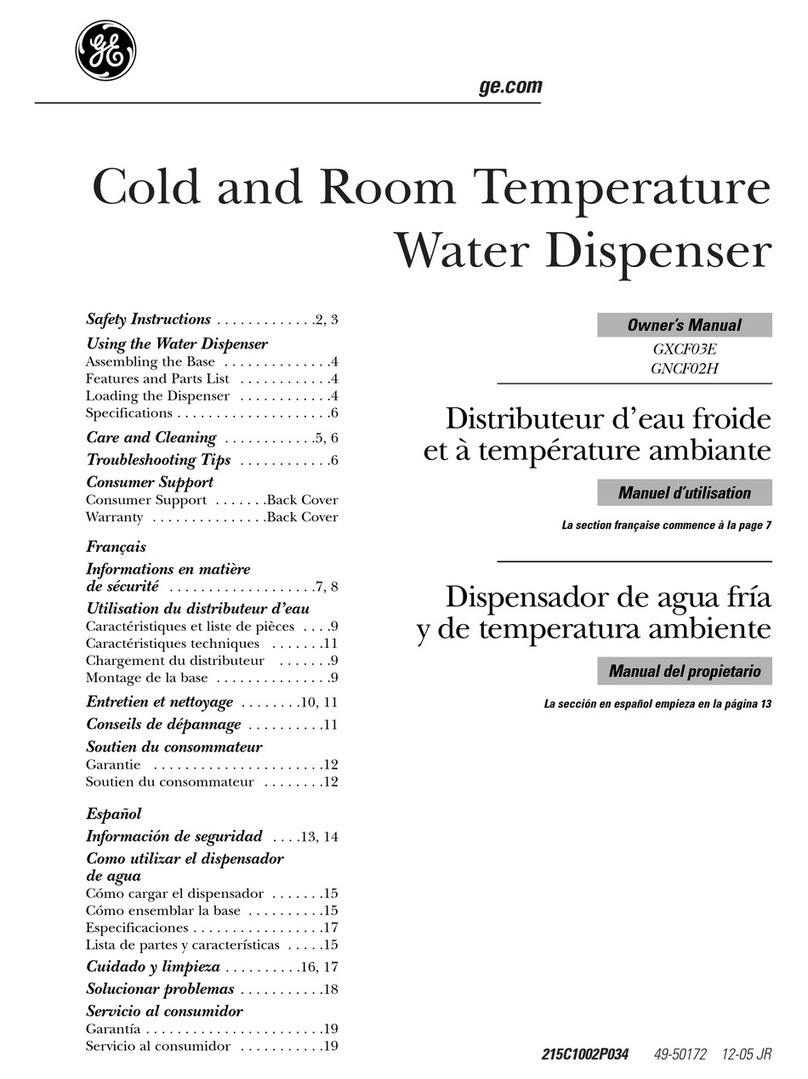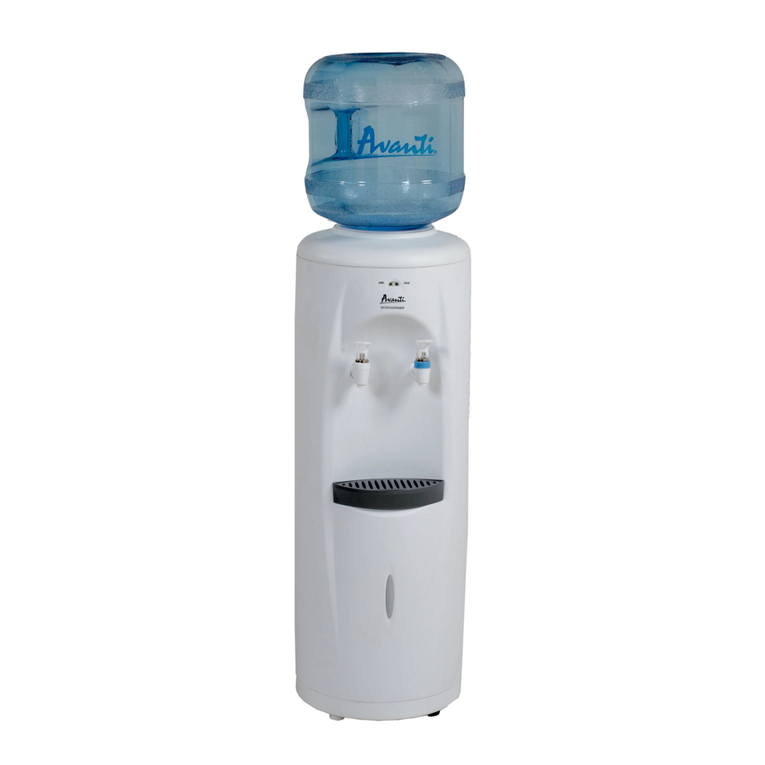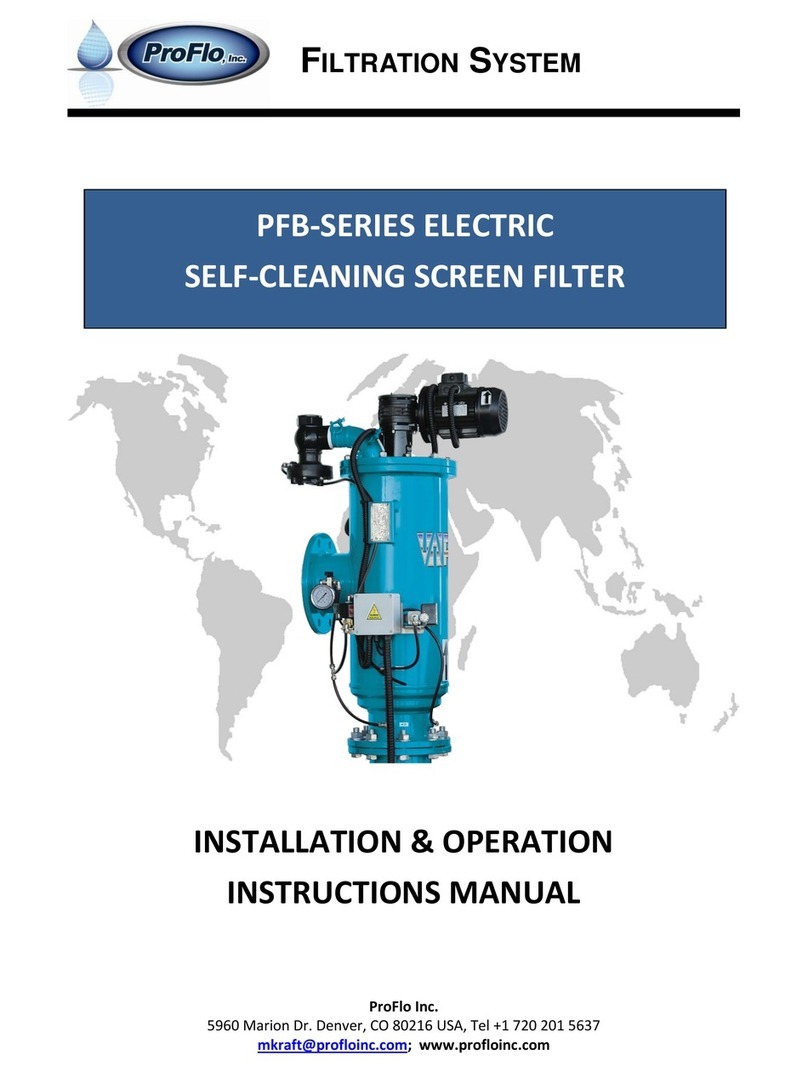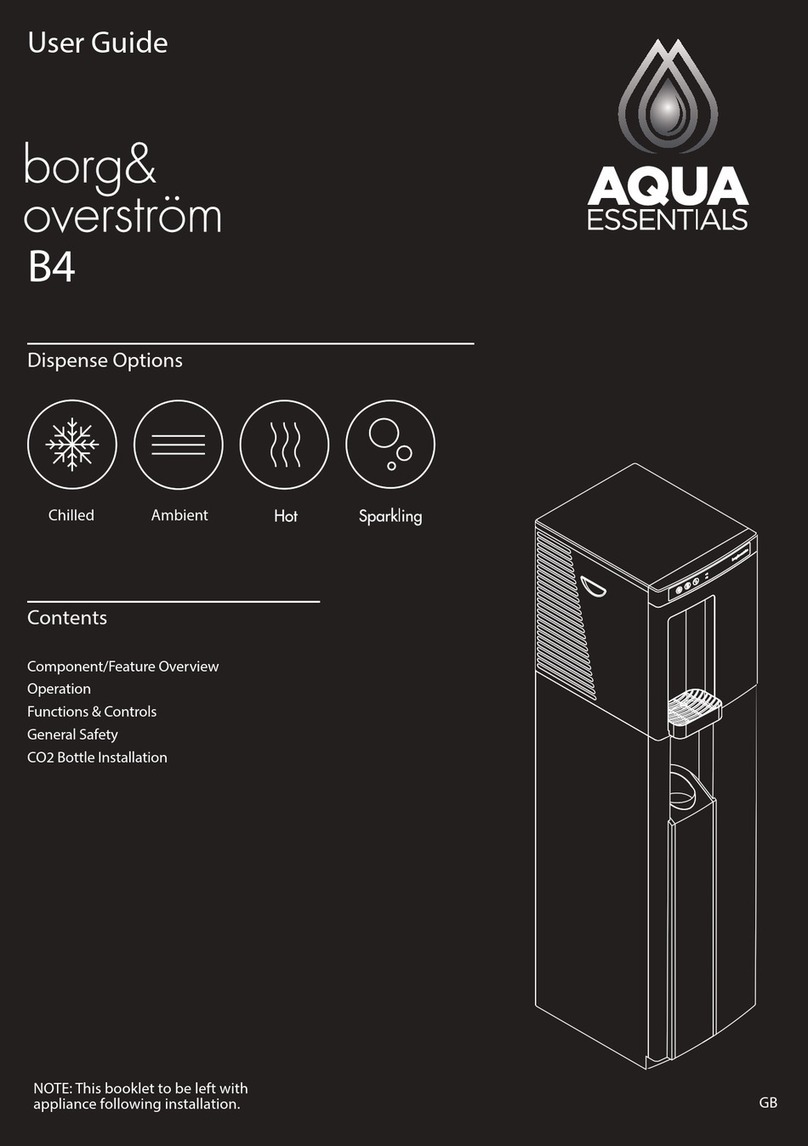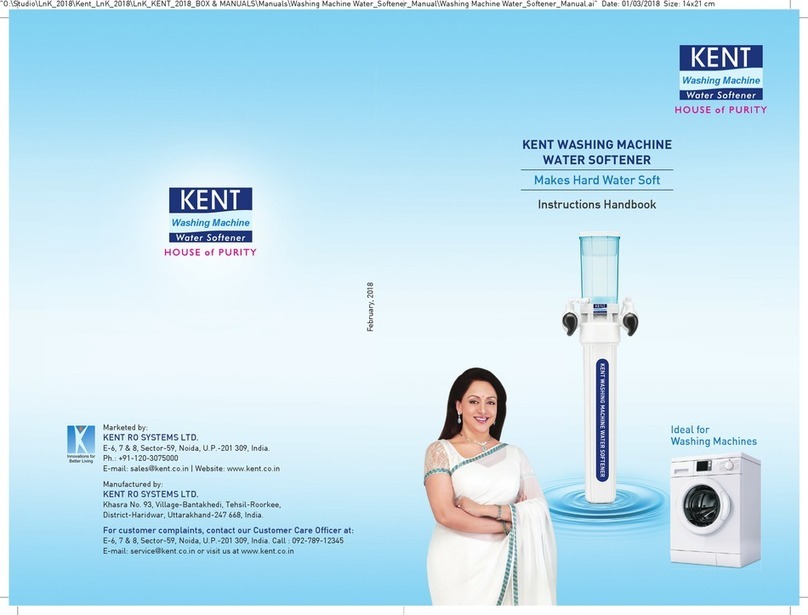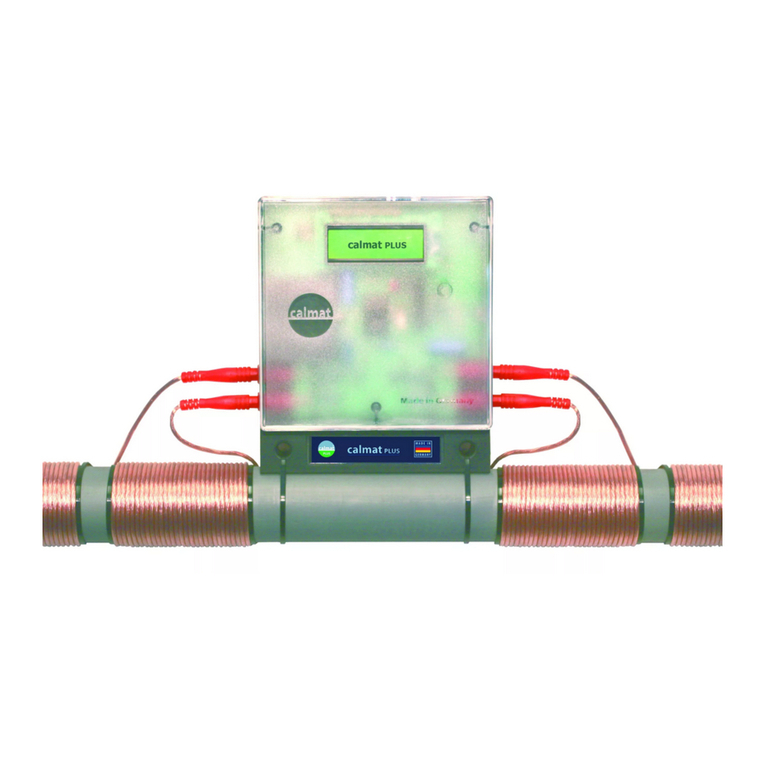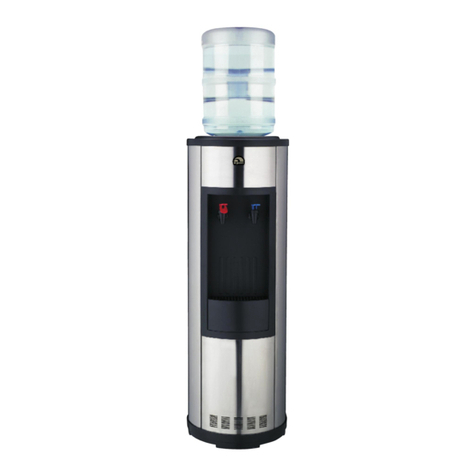NOVO NovoSoft 165 Series User manual

Canada West
855 Park St., Unit 1
Regina, SK S4N 6M1
Canada East
490 Pinebush Rd., Unit 1
Cambridge, ON N1T 0A5
U.S.A.
56 Lightcap Rd.
Pottstown, PA 19464
9760 Mayower Park Drive,
Suite 110
Carmel, IN 46032
4655 McDowell Rd. W
Phoenix, AZ 85035
Owners Manual
165 Series
Water Softener
1. Page 21 of this manual contains important maintenance procedures for the continued proper
operation of your unit. These MUST be performed regularly for your warranty to remain valid.
2. Read all instructions carefully before operation.
3. Avoid pinched o-rings during installation by applying NSF certied lubricant to all seals (provided with install kit).
4. This system is not intended for treating water that is microbiologically unsafe or of unknown quality without
adequate disinfection before or after the system.
IAPMO R & T Certified
against NSF/ANSI 44
IAPMO R & T Certified
against CSA B483.1

Table of Contents
READ THIS PAGE FIRST
BEFORE STARTING INSTALLATION 3
EFFICIENCY STATEMENT 4
HOW YOUR WATER CONDITIONER WORKS 5
SPECIFICATIONS
SPECIFICATION / SYSTEM DIMENSIONS 6
BRINE TANK DIMENSIONS 7
INSTALLATION
UNPACKING / INSPECTION OF TWIN TANK MODEL 9
UNPACKING / INSPECTION OF CABINET MODEL 11
BEFORE INSTALLATION 13
PREPARATIONS 14
PREPARATIONS / INSTALLATION STEPS 15
INSTALLING BRINE TANK 16
WATER SOFTENER INSTALLATION 17
CABINET WATER SOFTENER INSTALLATION 18
OPERATION
STARTUP INSTRUCTIONS 19
MAINTENANCE INSTRUCTIONS 21
RES-UP® FEEDER INSTALLATION INSTRUCTIONS 23
SERVICING 165 VALVE 25
REPLACEMENT
TIMER REPLACEMENT 26
REPLACING THE BYPASS AND METER CABLE 27
CLEAN INJECTOR ASSEMBLY / PISTON AND/OR BRINE VALVE ASSEMBLY REPLACEMENT 28
REPLACE METER ASSEMBLY / REPLACE MOTOR 29
REPLACE DRAIN LINE FLOW CONTROL / REPLACING PCBS 30
PARTS BREAKDOWN 31
PARTS
POWERHEAD 32
VALVE BODY 33
BYPASS 34
CABINET 35
MASTER PROGRAMMING 36

3
READ THIS PAGE FIRST
BEFORE STARTING INSTALLATION
Read this manual thoroughly to become familiar with the
appliance and its capabilities before installing or operating
the new appliance. Failure to follow instructions in this
manual could result in personal injury or property damage.
This manual will also help you to get the most out of
your new appliance.
Installation must comply with all State, provincial or local
regulations. Check with your local public works department
for plumbing and sanitation codes. In the event the codes
conflict with any content in this manual the local codes
should be followed. Consult your licensed plumber for
installation of this system.
WARNING!: Do not use water that is microbiologically unsafe
without adequate disinfection before or after this system.
Do not install this appliance where it may be exposed to wet
weather, direct sunlight, or temperatures outside of the
range specified above.
This appliance is designed to operate on pressures of 30
psi to 125 psi. If the water pressure is higher than the
maximum use a pressure reducing valve in the water supply
line to the device.
This appliance is capable of operating at temperatures
between 40°F and 110°F (4°C - 43°C). Do not use this
appliance on hot water supplies.
Avoid pinched o-rings during installation by applying
(provided with install kit) IAPMO certified lubricant to all
seals.
It is not uncommon for sediment, precipitated iron or
hardness to be present in water supplies. Precipitated
minerals or sediments can cause damage to the seals and
piston. This is considered a harsh environment and the seals
and piston would not be covered by warranty stated or
otherwise.
It is recommended to regularly inspect and service the
control valve on an annual basis. Cleaning and or replacement
of piston, seals, and or spacers may be necessary depending
on how harsh the conditions are. An Annual Maintenance kit
is available for this purpose
This publication is based on information available when
approved for printing. Continuing design refinement could
cause changes that may not be included in this publication.
The manufacturer reserves the right to change the
specifications referred to in this literature at any time,
without prior notice.
INSTALL NOTES &
SAFETY MESSAGES
Watch for the following
messages in this manual:
NOTE
Do not remove or destroy
the serial number. It must be
referenced on request
for warranty repair or
replacement
CAUTION!
Disassembly while
under pressure can
result in flooding.
WARNING!
ELECTRICAL SHOCK
HAZARD! UNPLUG THE UNIT
BEFORE REMOVING THE
COVER OR ACCESSING ANY
INTERNAL CONTROL PARTS
NOTE: used to emphasize
installation, operation or
maintenance information
which is important but does
not present a hazard.
CAUTION: used when
failure to follow directions
could result in damage to
equipment or property.
WARNING: used to
indicate a hazard which
could cause injury or death if
ignored.

4
IAPMO R & T Certified
against CSA B483.1
PERFORMANCE DATA SHEET
MODEL NUMBER 165-75 165-IOO 165- 150 165-200 165-250 165-300
Qty High Capacity Resin 0.75 ft3 1.0 ft3 1.5 ft3 2.0 ft3 2.5 ft3 3.0 ft3
Rated Service Flow (gpm) 7.5 11.0 11.2 12.4 12.6 12.9
Pressure Drop at Rated Service Flow (psi) 7.0 15.0 15.0 15.0 15.0 15.0
Rated Softening Capacity (grains) 9,609 @ 2.25lbs 13,269 @ 3lbs 20,443 @ 4.5lbs 27,258 @ 6lbs 32,559 @ 9lbs 40,887 @ 9lbs
Eciency (grains/lb salt) 4,271 4,543 4,543 4,543 4,543 4,543
Max. Flow Rate to Drain (gpm) 2.0 2.0 2.4 3.5 4.0 5.0
Working Pressure Min.20 • Max. 125 psi
Operating Temperature Min 39 - Max. 100 degrees Fahrenheit
EFFICIENCY STATEMENT
This product is efficiency rated according to NSF/ANSI 44.The stated efficiencies are valid only at the specified salt dosages and maximum service flow rate.
These softeners conform to NSF/ANSI 44 for the specific performance claims as verified and substantiated by test data.These models are efficiency rated.The efficiency rating is
valid only at the stated salt dose and maximum service flow rate. They have a demand initiated regeneration (D.I.R.) feature that complies with specific performance specifica-
tions intended to minimize the amount of regenerant brine and water used in their operation.These softeners have a rated softener efficiency of not less than 3350 grains of
total hardness exchange per pound of salt (based on sodium chloride) and shall not deliver more salt than their listed ratings.The rated salt efficiency is measured by
laboratory tests described in NSF/ANSI Standard 44.These tests represent the maximum possible efficiency that the systems can achieve. Operational efficiency is the actual
efficiency after the system has been installed. It is typically less than the efficiency due to individual application factors including water hardness, water usage, and other
contaminants that reduce the softener’s capacity. These systems are not intended for use with water that is microbiologically unsafe or of unknown quality without adequate
disinfection before or after the system. For best results, use plain, white block salt. Refer to Installation/operation manual and warranty for further details on installation, parts
and service, maintenance and further restrictions or limitations to the use of the product.

4 5
HOW YOUR WATER CONDITIONER WORKS
Why Water Gets Hard And How It Is Softened
All of the fresh water in the world originally falls as rain, snow, or sleet. Surface water is drawn upward by the sun, forming clouds.Then, nearly pure and soft as it starts to fall,
it begins to collect impurities as it passes through smog and dust-laden atmosphere. And as it seeps through soil and rocks it gathers hardness, rust, acid, unpleasant tastes and
odors.
Water hardness is caused primarily by limestone dissolved from the earth by rainwater. Because of this, in earlier times people who wanted soft water collected rainwater from
roofs in rain barrels and cisterns before it picked up hardness from the earth.
Some localities have corrosive water. A softener cannot correct this problem and so its printed warranty disclaims liability for corrosion of plumbing lines, fixtures or appliances.
Iron is a common water problem. The chemical/physical nature of iron found in natural water supplies is exhibited in four general types:
1. Dissolved Iron—Also called ferrous or“clear water”iron. This type of iron can be removed from the water by the same ion exchange principle that removes the
hardness elements, calcium and magnesium. Dissolved iron is soluble in water and is detected by taking a sample of the water to be treated in a clear glass.The
water in the glass is initially clear, but on standing exposed to the air, it may gradually turn cloudy or colored as it oxidizes.
2. Particulate Iron—Also called ferric or colloidal iron.This type of iron is an undissolved particle of iron. A softener will remove larger particles, but they may not be
washed out in regeneration effectively and will eventually foul the ion exchange resin. A filtering treatment will be required to remove this type of iron.
3. Organic Bound Iron—This type of iron is strongly attached to an organic compound in the water. The ion exchange process alone cannot break this attachment
and the softener will not remove this type of iron.
4. Bacterial Iron—This type of iron is protected inside a bacteria cell. Like the organic bound iron, it is not removed bya water softener.
Water softeners remove hardness in the water by exchanging particles in the water, or ions. They remove hard ions such as calcium and magnesium in the water by trading it
for sodium ions producing soft water. Unlike the calcium and magnesium, sodium stays dissolved in water and does not form a scale. Sodium also does not interfere with the
cleaning action of soaps. The sodium is released by a charged resin contained in the softener, this resin also traps the calcium and magnesium ions. Eventually this resin releases
all of its sodium and has filled up with other ions, so it then must be regenerated. Regeneration is accomplished by washing the resin with a salt saturated brine solution that
removes the calcium and magnesium while replenishing the sodium. This is why the softener requires a brine tank and salt. The water softener can run for days before running
out of sodium, and when it does, the sodium is replenished in only a matter of a few hours
When using a softener to remove both hardness and dissolved iron it is important that it regenerates more frequently than ordinarily would be calculated for hardness removal
alone. Although many factors and formulas have been used to determine this frequency, it is recommended that the softener be regenerated when it has reached 50–75% of the
calculated hardness alone capacity. This will minimize the potential for bed fouling.
If you are operating a water softener on clear water iron, regular resin bed cleaning is needed to keep the bed from coating with iron. Even when operating a softener on water
with less than the maximum of dissolved iron, regular cleanings should be performed. Clean every six months or more often if iron appears in your conditioned water supply. Use
resin bed cleaning compounds carefully following the directions on the container.
CAUTION!
Do not use where the
water is microbiologically
unsafe or with water of
unknown quality without
adequate disinfection be-
fore or after the unit.
Other manuals for NovoSoft 165 Series
1
This manual suits for next models
6
Table of contents
Other NOVO Water Dispenser manuals
Popular Water Dispenser manuals by other brands
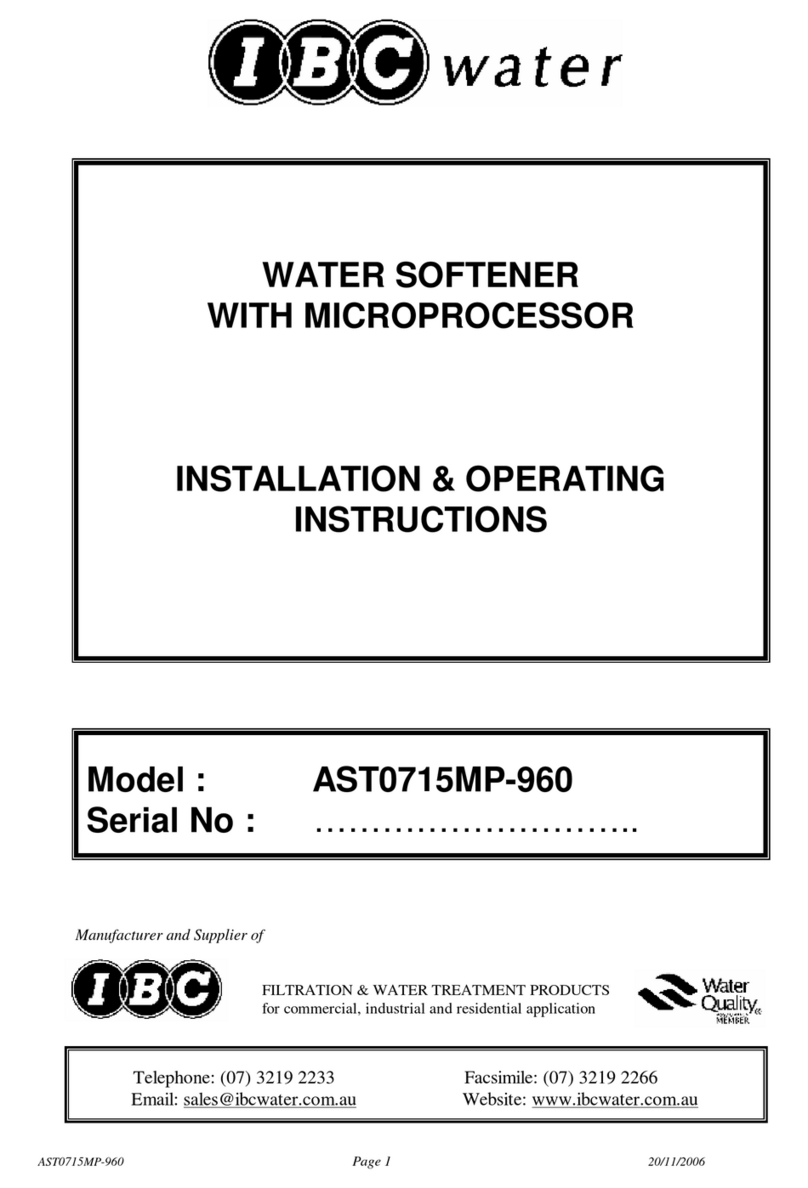
IBC Water
IBC Water AST0715MP-960 Installation & operating instructions
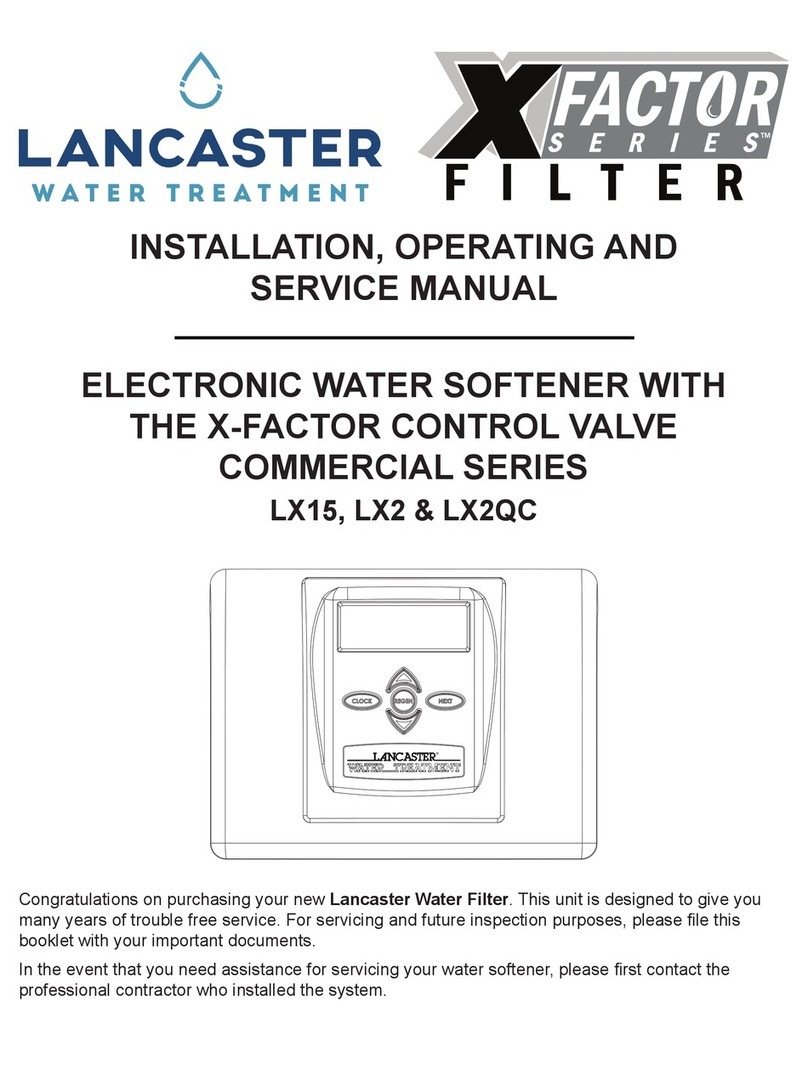
Lancaster Water Treatment
Lancaster Water Treatment X FACTOR LX15 Series Installation, operating and service manual
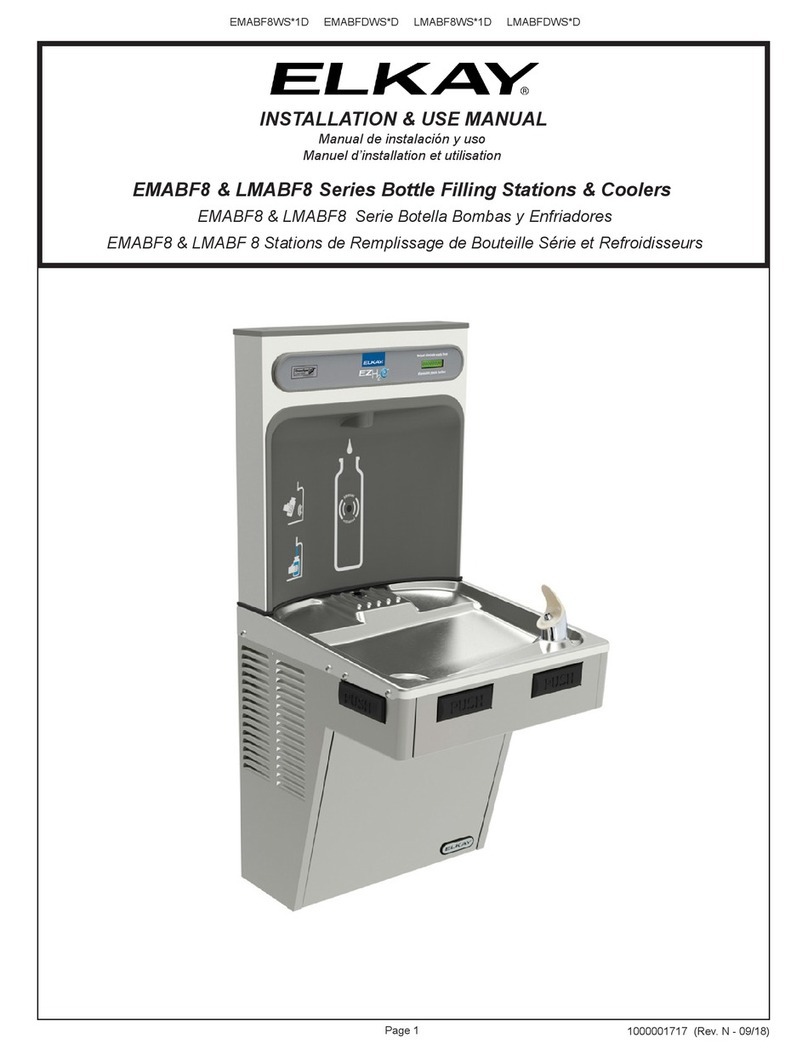
Elkay
Elkay EMABF8 Series Installation & use manual
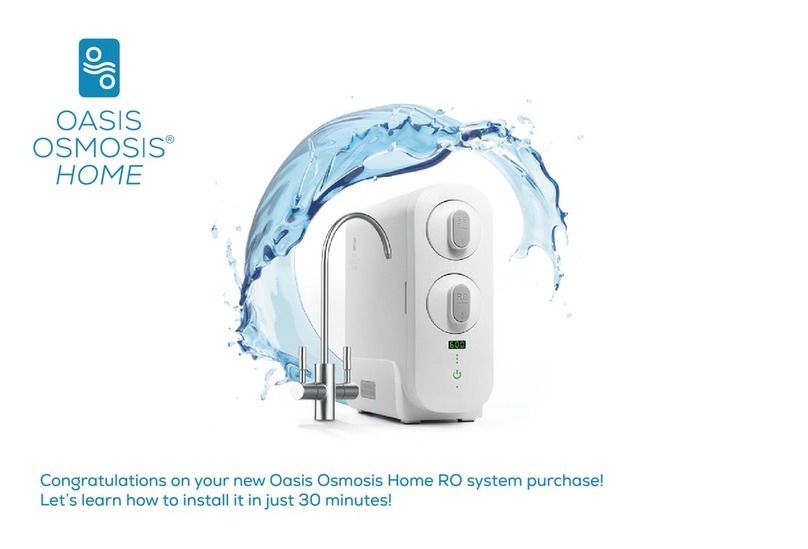
Oasis
Oasis Osmosis Home installation manual

Monarch Water
Monarch Water ULTIMATE MINI AQUA HE install guide
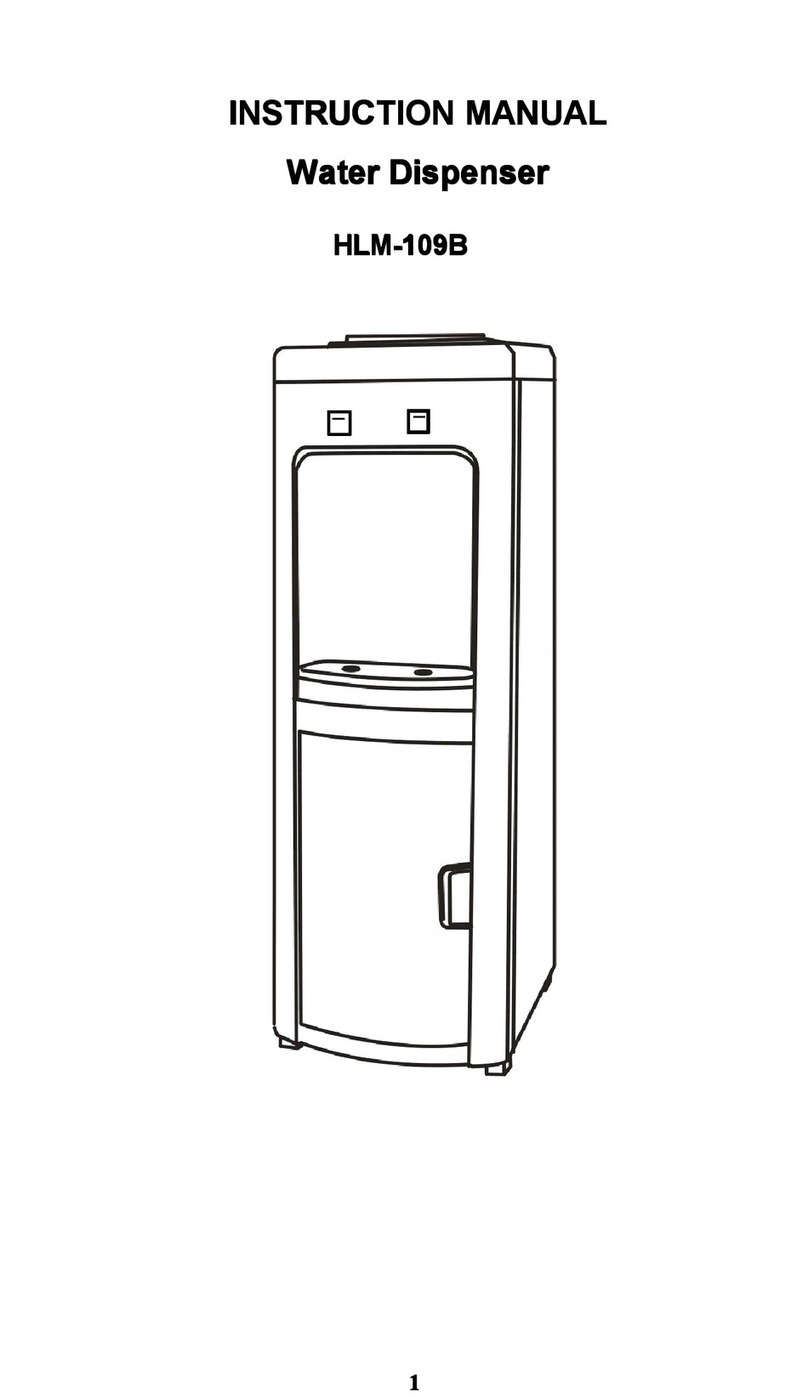
Haier
Haier HLM-109B instruction manual





